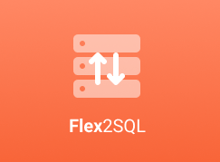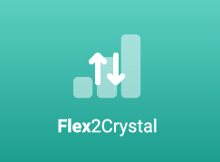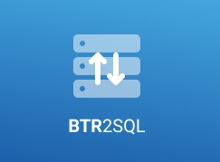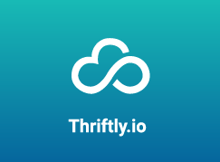Migrate From Btrieve to PostgreSQL, Oracle, and SQL Server
Introduction
Many independent software vendors (ISV) and corporate users still rely on applications that use a category of database collective called Index Sequential Access Method (ISAM) databases, which include DataFlex, Btrieve, C-SAM, and the like. Applications that used ISAM databases were typically developed using COBOL, C/++, Delphi, DataFlex, Magic, variations of BASIC, and others.
While ISAM-based data management systems are stable and fast, the potential benefits of switching to a modern relational database, such as improved security, data integrity, ease of integration, and deployment on cloud infrastructure, are compelling reasons for software vendors and corporate IT departments to consider this migration.
However, switching from an ISAM database to a relational database is challenging. Companies often choose to rewrite the application code to pursue database modernization, either partially or completely. Such application rewrite projects can become increasingly complex and costly with unpredictable outcomes.
A less risky and lower-cost option is adopting database drivers, like BTR2SQL and Flex2SQL, that enable you to switch the database without touching a single line of your application. These specialized database drivers are highly optimized for a target relational database and provide the immediate benefits of a modern relational database without touching a single line of your existing code.
Five Reasons to Migrate your ISAM Database
ISAM-based applications were typically developed using COBOL, C or C++, Delphi, DataFlex, Magic, and variations of BASIC. These applications were typically developed in the late eighties before relational databases became viable for business uses. Many large business applications, especially in the financial sector, were developed with ISAM databases. Companies have stayed with these databases because switching them without investing significant money in rewriting the application is difficult.
1. Accessing Data is Not Easy
As more and more companies are heading towards a cloud or hybrid cloud infrastructure, integrating these older systems with modern applications is becoming increasingly important. However, accessing data in these systems is not always easy because there is no standard way to access data, like using SQL for a relational database. Accessing your data in Btrieve, C-ISAM, and other data management systems requires looking at the data structures used in the programs to understand how the data is physically stored. This is a cumbersome process. Dumping data into text files and then reloading them into their relational database to use for business reporting and analysis is inefficient and prone to mistakes.
2. Skills Shortage
The shortage of developers experienced with ISAM-style databases, like Btrieve, creates significant challenges for enterprise users and software vendors. This lack of expertise makes it difficult for enterprises to maintain or modernize legacy systems, as fewer engineers possess the specialized knowledge required for these databases. For software vendors, this reduces their talent pool, increases support costs, and complicates efforts to integrate modern technologies. Without experienced developers, companies face higher risks of operational inefficiencies, security vulnerabilities, and difficulty scaling or adapting their systems to current needs.
3. Data Security and Integrity
ISAM-style databases lack the advanced security features in modern relational databases, such as encryption, access controls, and auditing capabilities. This makes ISAM systems more vulnerable to breaches and unauthorized access. Additionally, unlike SQL databases, ISAMs like Btrieve allow direct access to data via the operating system’s file manager, making unauthorized access a constant possibility. As data privacy laws like GDPR and CCPA enforce strict requirements on protecting personal and sensitive information, companies must prioritize data security to avoid hefty fines and reputational damage. Migrating to relational databases with built-in security mechanisms helps ensure compliance with these regulations and better protects sensitive business and customer data.
4. Cost of Ownership
Licensing costs have steadily increased, putting a financial strain on businesses, especially software vendors, who must constantly justify the licensing costs to their customers. Additionally, the limited pool of developers experienced with Btrieve and other ISAM systems results in higher maintenance and support costs. In contrast, open-source relational databases like PostgreSQL have no licensing cost and can be freely used on-premise or in the cloud. In addition, there is also no shortage of skilled developers and database administrators who work with mainstream databases.
Common Migration Use Cases
Corporate IT Departments
A typical migration scenario would be a financial services company using a COBOL application with Btrieve transactional API. The company’s COBOL-based application, previously reliant on Btrieve, struggles with scalability, demands of integrating with modern infrastructure and applications, and data reporting challenges. The application gains enhanced reporting capabilities, faster query performance, and improved security features by migrating to a relational database. This transition allows the business to scale operations, meet compliance regulations, and integrate with modern analytics tools without rewriting the COBOL code.
So, what are the challenges in undertaking a COBOL database modernization? How do you predict the cost of such an undertaking?
Software Vendors
A software vendor that develops ERP solutions for small and mid-sized businesses uses Btrieve as its database but faces scalability limitations and integration challenges with modern reporting tools. Rising Btrieve licensing costs and limited developer expertise compound these issues. The vendor can eliminate licensing costs, improve data security, and benefit from a larger developer talent pool by migrating to an open-source relational database like PostgreSQL. PostgreSQL also provides better scalability and compatibility with modern tools, helping the vendor offer enhanced performance and reduced total cost of ownership for their customers.
Three Database Modernization Options
When transitioning from Btrieve to a relational database like PostgreSQL or SQL Server, companies generally use one of the following strategies:
-
Middleware Approach: Use middleware, like BTR2SQL, to connect existing applications to the new SQL database without requiring major code changes, allowing for smoother transitions while maintaining legacy applications.
-
Parallel Systems: Run Btrieve and the relational database simultaneously during migration, testing, and validating the new system while keeping the old system operational.
-
Application Modernization: Rewrite or refactor applications to leverage relational database features fully, optimizing for long-term scalability and integration with modern technologies.
Each approach depends on the complexity of the application, business needs, cost, and impact on your business.
Middleware Option to Migrate from Btrieve to a Relational Database
While many ISAM data management systems flavors exist, Btrieve is the most popular and widely used. It was widely distributed with Novell initially and found great popularity with application developers using COBOL, Delphi, C and C++, Magic, and Visual Basic. C-ISAM is another also found acceptance with COBOL developers downsizing from mainframes to Windows PCs.
When modernizing from Btrieve to a relational database, the middleware approach using tools like BTR2SQL stands out as the best option for several reasons. It allows businesses, especially software vendors, to connect existing applications to modern databases like PostgreSQL or SQL Server without needing costly and time-consuming code rewrites. Additionally, it’s cost-effective, as companies avoid the extensive resources required for a full-scale application overhaul while still gaining the scalability and security benefits of a modern relational database.
Benefits to Enterprise Users
- Fast and Easy Migration: Btrieve-based applications are operable with SQL and Btrieve concurrently, which means no rewriting, no “code freezes,” and no disruption to your customer’s database access.
- Data Consolidation: SQL's scalability means no more correlating data across multiple databases – all your Btrieve files can now exist on a single corporate-wide database.
- Faster Reporting: Access to SQL-based tools means better reporting and analytic services, a crucial aspect of today’s business climate.
- Heightened Compatibility: Access data from other applications and gain access to new features for your customers.
- Lower Costs: Users can continue to use familiar applications and explore new ones with no retaining costs and minimal added expenses.
Benefits for Software Vendors
- Cut Down Timelines: Run existing applications on SQL immediately without costly processes for code rewrites, testing, and deployment. Even better, you don’t have to retrain your programmers.
- Access New Business: Gain the flexibility to continue supporting Btrieve-based applications while offering solutions for both Btrieve and SQL-based databases.
- Speed and Reliability: Mertech’s high-performance drivers ensure that all translated functions are optimized to work with a SQL-based backend, and you also gain access to SQL-based tools.










